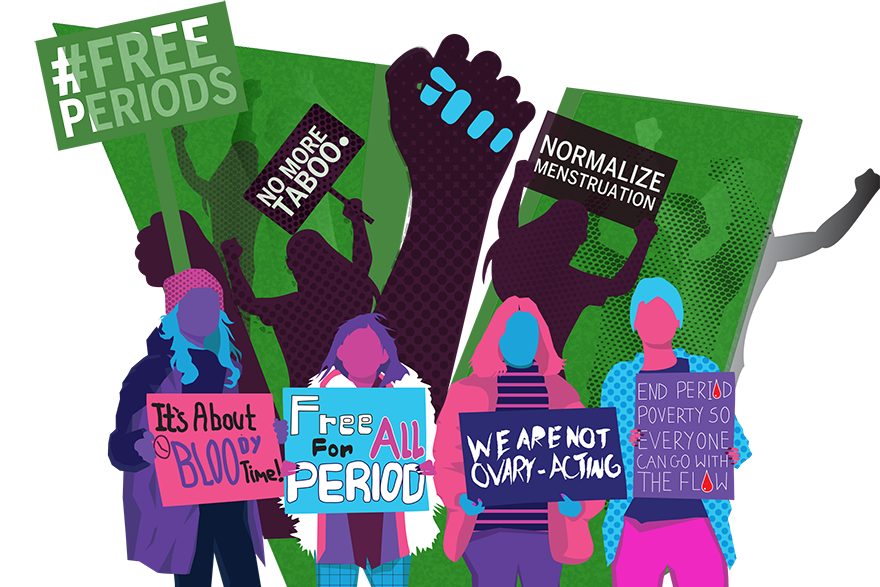By: Julia Smith, General Member
Period poverty is a global issue that affects those who menstruate. In Canada, menstruation typically begins between the ages of 11 and 14, and estimates suggest that the average woman spends upwards of 6 years menstruating over the course of her lifetime. However, despite being a natural biological process, periods are stigmatized and many people struggle to access and afford menstrual products, leading to period poverty.
Period poverty is a term used to describe the barriers people face when purchasing period products. It can occur due to lack of access or affordability, as well as cultural norms that stigmatize menstruation. According to a 2018 survey by Plan Canada, 33% of women under age 25 and 23% of women overall have faced difficulty affording period products for themselves or their dependents. The COVID-19 pandemic has exacerbated this issue, as public health centers and libraries, which are places where people could access free products were closed during lockdowns.
In Indigenous communities across Canada, individuals have resorted to using socks to manage their periods. In some countries, like India and South Sudan, people use old cloth, husk, ash, mud, goatskin, or sometimes nothing at all. This can have detrimental health implications, as unsanitary measures can lead to infections and in some cases, toxic shock syndrome, a potentially deadly infection. Sanitary napkins and other menstrual products are expensive, and low-income women, women on social assistance, and those living in rural communities can find it difficult to buy what they need. Homeless, low-income, and marginalized women may also struggle to afford menstrual products, further compounding period poverty.
Despite these challenges, there are positive programs and efforts working to end period poverty in Canada. For example in 2015, Canada eliminated the tax on menstrual hygiene products. Menstrual cups can be a cost-effective and environmentally friendly option for those looking to replace disposable products, and organizations like DivaCup donate menstrual cups to fight period poverty. The Period Priority Project, a youth led organization, has distributed over 18,000 pads, tampons, period underwear and menstrual cups since May 2022 to 45 groups (shelters, foodbanks, organizations) across Canada. Another youth-led organization, The Synergy Project, in partnership with H.E.A.R for Them, is a grassroots organization dedicated to tackling period poverty in Edmonton and Calgary.
On a national level, the Ontario Government began a three-year partnership with Shoppers Drug Mart in October 2021 to increase access to menstrual supplies. The 2022 federal budget proposed $25 million over two years to establish a national pilot project for a menstrual equity fund, making these products available to Canadians who cannot afford them. The media has also brought attention to period poverty, with the Oscar-winning short film, Period. End of Sentence, highlighting the taboo around menstruation. The movie tells the story of women in rural India who create a sanitary napkin making machine, leading to safer sanitary measures.
Although period poverty is a significant issue in Canada and worldwide, there are positive programs, efforts, and advocacy working to address this issue and increase access to menstrual products. Everyone deserves equal access to period products, and with continued efforts, we can work towards menstrual equity for all. It is important for society to recognize this issue and begin a broader discussion about women’s health and menstruation. We need to normalize menstruation. Sanitary napkins, tampons and other menstruation products should not be considered a luxury, but a must, just as toilet paper is.
Together, we can end period poverty.

